You likely put a lot of work into designing your koi pond. So, you’re understandably frustrated if it’s hard to spend time enjoying it during the summer because of too many mosquitoes.
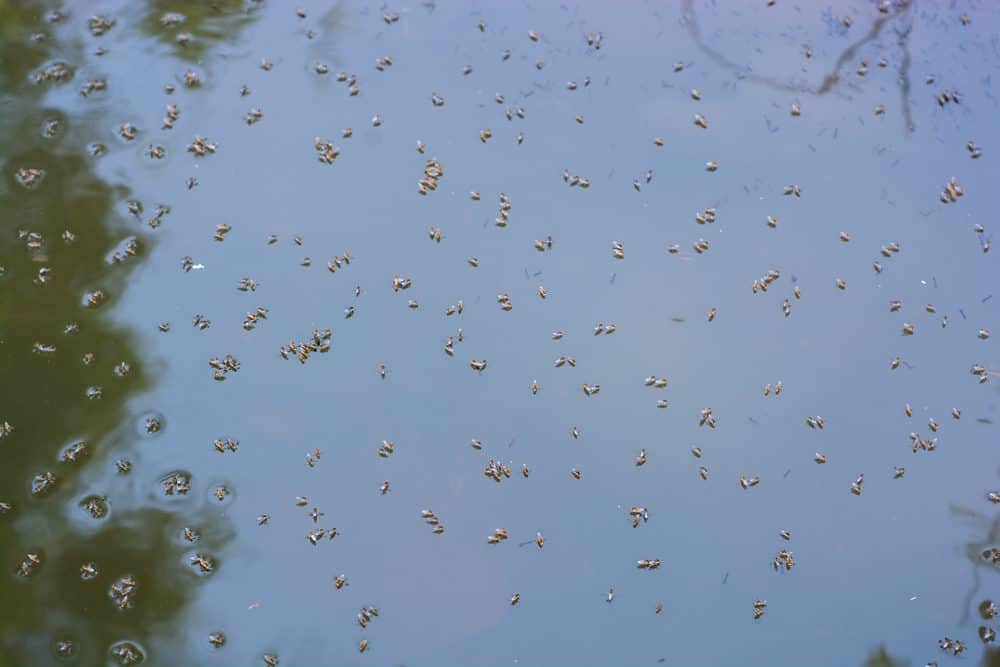
Even though there are over 3,000 species of mosquitoes in the world, it’s possible to reduce the number of mosquitoes in your koi pond. I have experience managing backyard ponds and will be sharing what I’ve learned with you through my trial and error.
If you’re ready to know why mosquitoes gravitate to your backyard pond, learn how to implement koi pond mosquito control techniques, and discover whether mosquitoes negatively impact your koi fish, read on.
Fortunately for mosquitoes, and unfortunately for you, a mosquito can complete its entire four-stage life cycle around your koi pond. The stages are as follows:
If learning about this life cycle doesn’t make your skin itchy already, here’s something that will-adults lay around 100 mosquito eggs at a time, and the mosquito’s life cycle is complete in only eight to ten days. Yikes!
My guess is that you arrived here because you’re concerned about how many mosquitoes are biting you when you’re hanging out around your koi pond. But you might be wondering-do mosquito larvae harm your fish?
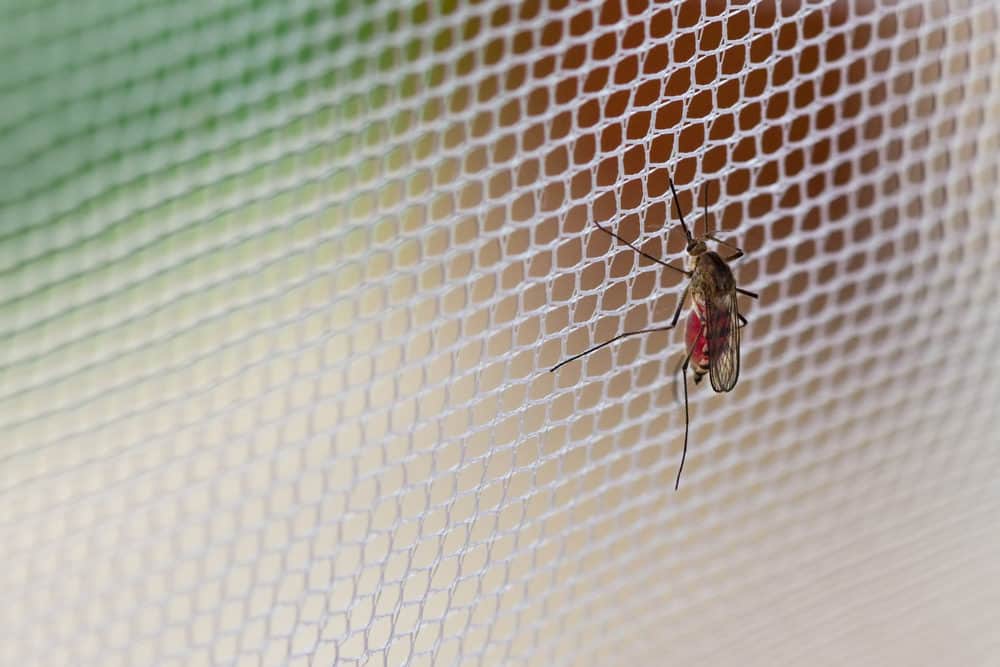
Under most circumstances, you don’t have to worry about mosquito larvae damaging your koi fish’s health. That said, there are isolated cases where mosquitoes can carry too much bacteria into a pond.
Usually, this bacteria overload occurs in small ponds that don’t have proper aeration and water flow. In rare cases, your koi fish may also suffer from too much organic matter in the water from decomposing mosquito eggs.
Now that I’ve got you up to speed on the relationship between mosquitoes and water, let’s look at some trusted koi pond mosquito control techniques.
Water circulation is crucial for koi health, but it also helps reduce mosquito populations. According to the Koi Organization, water should circle the circumference of your pond.
From a koi health perspective, that’ll help your water maintain proper total dissolved oxygen and ammonia levels. From a mosquito breeding perspective, it’ll cut down on the number of females that lay their eggs.

Ideally, you should include a water feature such as a fountain in your koi pond, which will further reduce the stagnant water surface area. The idea is that the more movement you can create above and beneath the surface of your pond, the more hostile the environment for females to find an egg-laying spot.
If you’re having trouble creating circulation in your water, check the location of your outlet and inlets. If they’re across from each other, there will be less water flow throughout your koi pond.
If you’re leery about using chemicals in your pond water, you’ll be glad to know that mosquito dunks are a 100% natural way to control mosquitoes.
The way they work is by using the bacterium bacillus thuringiensis israelensis to destroy mosquito larvae. It’s a non-toxic product for pond fish, and it does little harm to other aquatic organisms. That is unless you’re larvae.
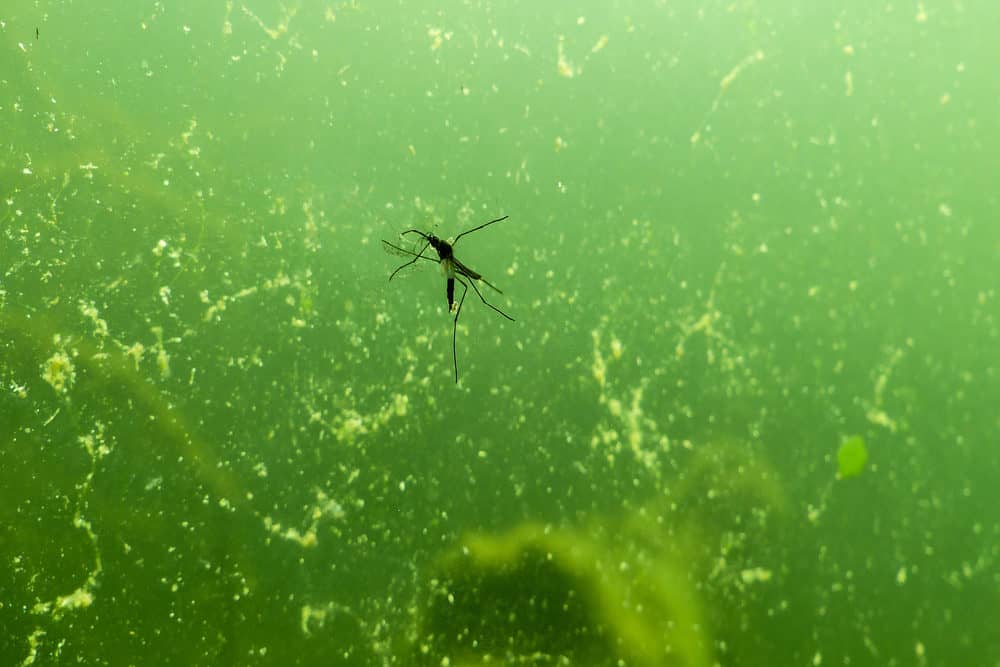
Mosquito dunks are effective for koi pond mosquito control in addition to controlling larvae that would otherwise turn into black flies and fungus gnats too.
There are many brands you can choose from that offer mosquito dunks, but they all work about the same. For example, Summit’s MosquitoDunks lasts for 30 days. It gradually releases the bacteria during this time and attacks mosquito larvae at the surface and the bottom of your koi pond.
If the mosquito population is already unbearable around your pond, then mosquito bites might be a better fit for you at first. They use the same bacteria as mosquito dunks but have a speedier formula, killing larvae in 24 hours.
Mosquitoes require standing water to lay their eggs and an aquatic environment during their larva stage. But they’ll only hang around your koi pond during most of their adult lives if they have a good source of food. And no, I’m not just talking about your blood!
Did you know that mosquitoes feed on the sweet nectar or honeydew of plants to survive? If you didn’t, this might shock you as well-females are the only sex that needs to consume blood since they need protein to create eggs.
So, what does this mean for you and your koi pond? If you have beautiful flowering plants around your pond, they could be helping to keep mosquitoes around.

Am I suggesting you cut your flowers down? It depends on how many you have and how serious you are about eliminating as many mosquitoes as possible.
Personally, I think your better option is to attack a mosquito pupae’s favorite food, which is algae and other plant material that grows in the water. So, head to your local garden store and pick up some aquatic herbicide.
A wonderful by-product of reducing the amount of aquatic vegetation in your koi pond is that it’ll get rid of mosquito hangout spots. Mosquito larvae and pupae love clusters of organic material beneath the water. Similarly, adult mosquitoes enjoy using vegetation growing above the water as hiding spots.
Believe it or not, Mother Nature created mosquitoes for reasons other than to drive you crazy. These insects that we love to hate make delicious meals for many creatures. So, consider nipping your mosquito problem in the “larvae” by introducing the following larvae-eating critters into your koi pond:
Understandably, you might not want dozens of tadpoles turning into frogs around your yard.
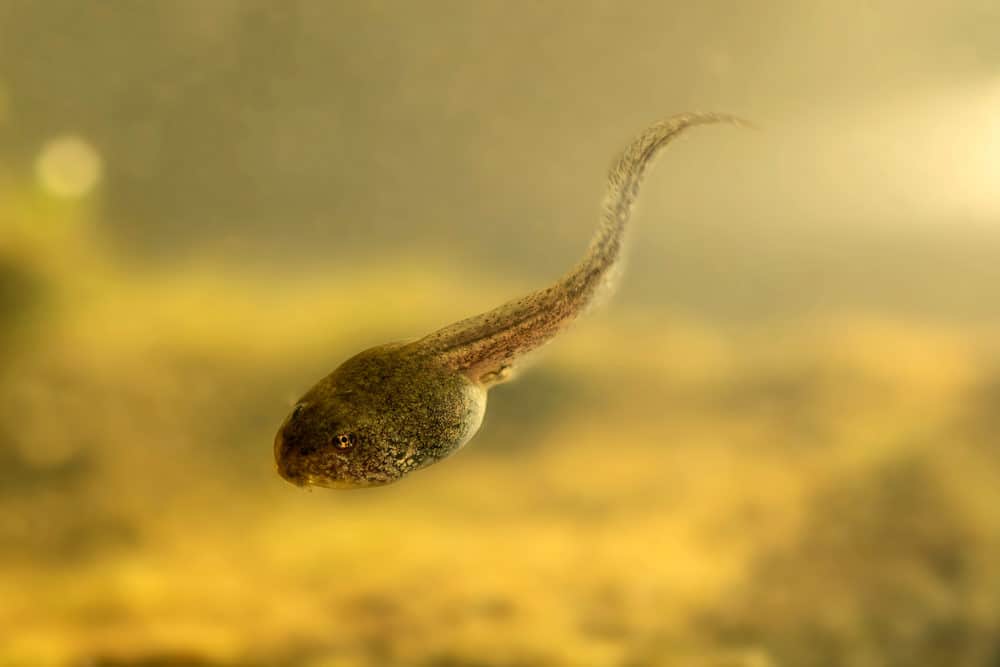
So, another alternative is turning your pond into a mosquito-fighting machine by adding some gambusia affinis. These minnow-like fish originate in the United States, and people lovingly call them Mosquitofish.
What’s great about Mosquitofish is that they naturally control their own population in koi ponds. When you first introduce them, they’ll likely reproduce fast since there will be so many mosquito larvae for them to eat. But as the larvae dwindle, these fish will naturally reduce their own population.
Mosquitofish will live in harmony with your koi fish. And since koi fish are almost entirely vegetarians, you won’t have to worry about waking up one morning to extra fat koi fish and non-existent Mosquitofish.
We’ve talked a lot about underwater koi pond mosquito control, but there are things you can do to keep pesky adult mosquitoes at bay. One of the best ways is to set up an environment that encourages a high bat presence.
According to a study published in Animal Behaviour, certain species of bats can eat as many as ten mosquitoes per minute. That equates to 600 mosquitoes per hour! Bats suddenly don’t seem so scary anymore, do they?
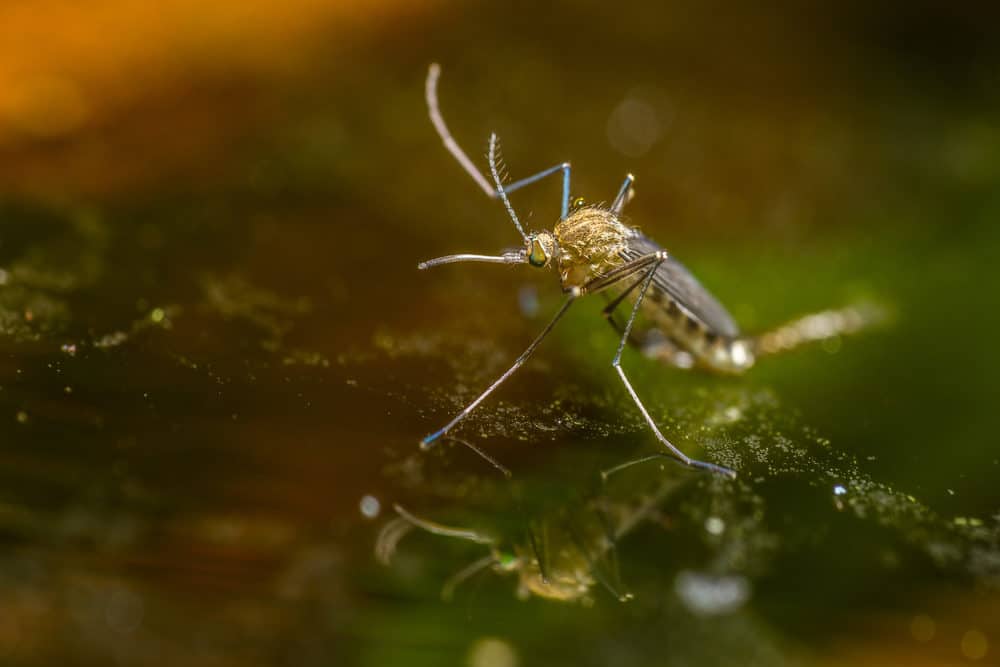
While not all bats gravitate towards mosquitoes, it can’t hurt to create a habitat that will attract them. To do so, I recommend buying or building bat houses and installing them in trees near your koi pond.
Bats prefer to sleep in houses that are a minimum of ten feet off the ground. But if your ladder can manage 12 - 20 feet, they’ll be even happier. Furthermore, you should try to place your bat house where the sun (or partial sun) will hit it for six to eight hours per day. Ideally, bats prefer to have that sun in the morning.



